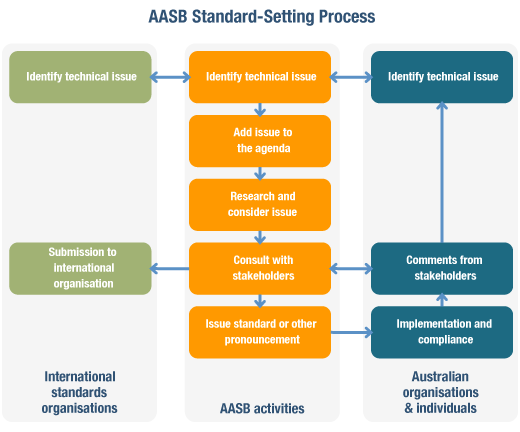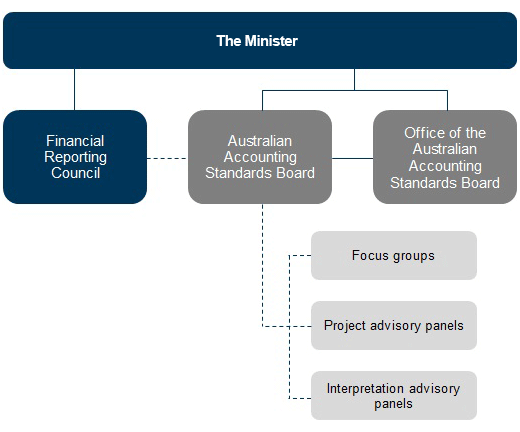Introduction
The Australian Accounting Standards Board (AASB) currently amended its accounting standards for for-profit and not-for-profit organisations (Australian Accounting Standards Board, 2014). This paper summarises the amended sections of the standards and highlights the costs and benefits of the amendments. The paper summarises the effects of the amendment on different aspects, such as control, power, substantive rights, protective Rights, variable returns, and agent vs. principal.
Control
According to the amendments, the control of for-profit organisations will be informed through contractual agreements and rights on shares held (Australian Accounting Standards Board, 2014). In not-for-profit organisations, investors are not obligated to invest in the entity. Also, the investor and organisations are considered are merely objects sharing a relationship wherein the organisation may eventually control the investor (Australian Accounting Standards Board, 2014).
Power
According to the amended AASB standards, the investor in a for-profit organisation has the power over the organisation. In the not-for-profit organisation, the Investor only has the power over the organisation when the investor has the ability to order the organisation to use its resources in a manner that affects the returns of the investee. In the for-profit organisation, the source of the investor’s power is on the rights of shares according what is stipulated by the entity.
In the not-for-profit organisation, the source of power will be influenced by executive agreements wherein the not-for-profit organisation gives investors (who do not automatically have power because they invest in financing the organisation) power. In the not-for-profit organisations, the investors will have power if they have the right to perform certain activities, such as the right to endorse capital budgets concerning important functions (Australian Accounting Standards Board, 2014).
Substantive Rights
Substantive rights are determined by investigating the rights that prevent investors from performing their rights (Crovitz, 2008). In the for-profit organisation, rights are substantive if they are exercisable during the decision making process. Substantive rights in not-for-profit organisations may result from cultural, social, or political, barriers (Australian Accounting Standards Board, 2014).
Protective Rights
These are the rights that protect an investor’s interest without handing power over to the investor (Bradshaw, 2010). Some protective rights in the for-profit organisation include investor’s right to prevent the entity from engaging in specific activities, or to claim the assets of an entity if the entity defaults. In the not-for-profit organisation, protective rights are the rights of the organisation to protect its stakeholders. For example, a non-profit-organisation may choose to stop donating to a charity if the charity fails to distribute the resources as agreed (Australian Accounting Standards Board, 2014).
Variable Returns
In the for-profit organisation, returns may include the integration of administrative functions with the organisation to reduce expenses, increase revenue, and ensure other functions that increase investor benefits. In the not-for-profit organisation on the other hand, the variable returns include monetary and non-monetary resources, and the extension of investor’s goals. For instance, an entity providing resources to the recipients may influence the degree to which the social policies of the investors are extended, including the effectiveness of service delivery (Australian Accounting Standards Board, 2014).
Agent vs. principal
The Act stipulates certain principles that decision makers must consider in order to determine their positions as either agents or principals. The decision maker must consider the rights of the decision maker, the rights of other parties, the risks of variability of returns, and the compensation of privileges. In the not-for-profit organisation, the trustee may be appointed by the entity to serve as the agent, and provide compensation as deemed commensurate (Australian Accounting Standards Board, 2014).
Conclusion

The chart above is an illustration of the standard-setting process as stipulated by the AASB for for-profit organisations. The interaction between the different stakeholders and procedures as illustrated in the chart is seen to result in a complex information disclosure management system. The disclosure requirements are more complex in for-profit organisations than in not-for-profit organisations (Jeffers, Mengyu, & Askew, 2010). This may be owing to the more flexible disclosure system characteristic to not-for-profit organisations’ disclosure requirements.
With the introduction and implementation of differential reporting, it is possible for entities to begin adopting the standards (Birt, 2007). Nevertheless, it is not expected that many entities will be keen to adopt the standards with enthusiasm considering that some of the new stipulations are somewhat complicated, and that it will be disadvantageous for some entities to adopt the stipulations. Nevertheless, some stakeholders in for-profit organisations may use the existing control standards as a basis to merge and other organisations may take advantage of the elimination of the risks and remunerations requirements to rationalise no longer integrating securitisation mediums.
The entities in the not-for-profit sector are exposed to a more flexible disclosure system and this gives the agents and stakeholders more room to focus on other activities geared towards improving the overall performance of the organisation. From the diagram below, it is obvious that the reporting system is not as complex as the system presented in the initial figure. This is an indication of the advantage of differential reporting, specifically for the stakeholders and administrators of not-for-profit organisations.

References
Australian Accounting Standards Board. (2014). An update on the Differential Reporting Project (AASB101-1048). Canberra, Australia: Author.
Birt, J. (2007). Accounting: Business Reporting for Decision Making. NY: John Wiley.
Bradshaw, M. (2010). Response to the SEC’s Proposed Rule- Roadmap for the Potential Use of Financial Statements Prepared in Accordance with International Financial Reporting Standards (IFRS). Accounting Horizons (24)1, 247-252.
Crovitz, L. G. (2008). Closing the Information GAAP. The Wall Street Journal 248(6), 18-19. Web.
Jeffers, A., Mengyu, W., & Askew, S. (2010). The Switch from US GAAP to IFRS. Proceedings of the Northeast Business & Economics Association, 8(3), 48–54.
